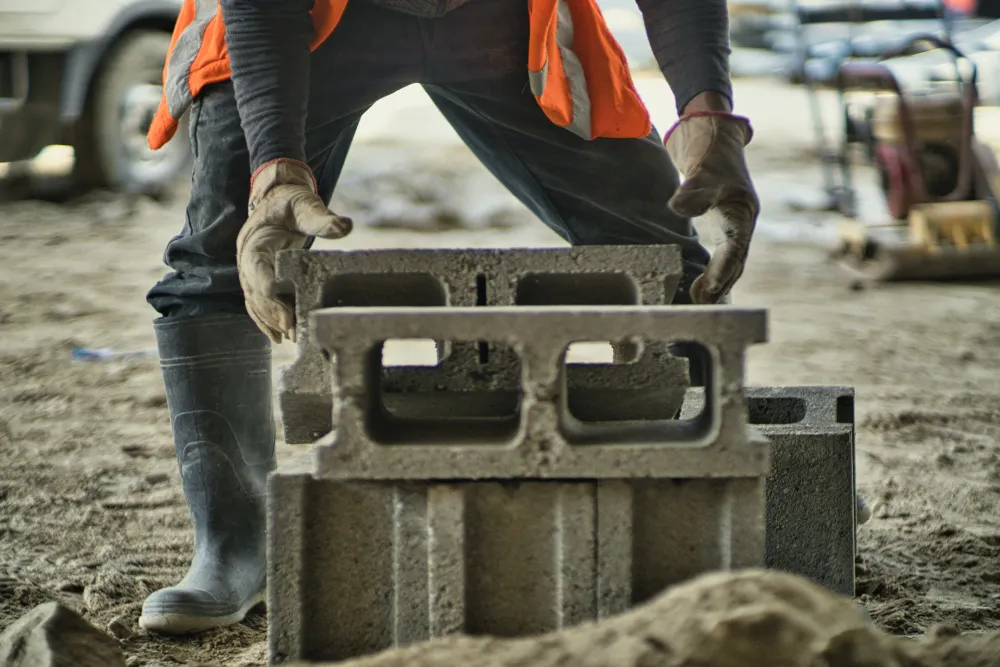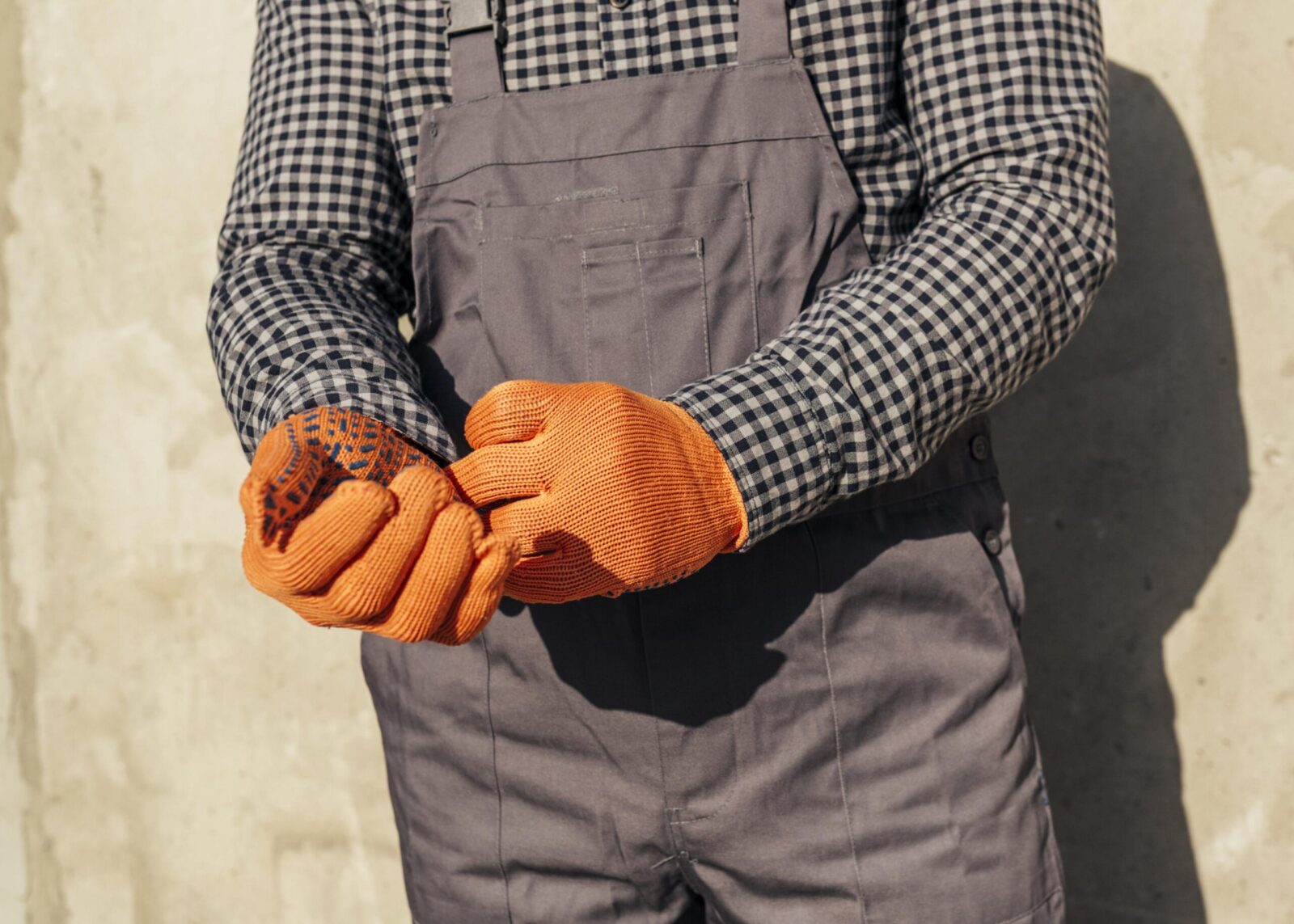
Arc Flash Gloves: Selecting the Right Protection
Choosing the right Arc Flash Gloves is key to ensuring your safety in high-risk environments like electrical maintenance or construction....

Get 20€ off on your first order!
The most valuable tools for construction workers are undeniably their hands, making it essential to safeguard them with the appropriate gloves. However, the vast array of options on the market can make it challenging for you to determine the perfect gloves for your unique use cases.
In this comprehensive guide to buying construction gloves, we will take a closer look at the different types of gloves used in the construction industry, including cut-resistant gloves, chemical-resistant gloves, impact-resistant gloves, and other options like waterproof gloves, disposable gloves, heat-resistant gloves, nitrile gloves, and leather gloves.
We will walk you through the unique features and benefits of each type of glove, as well as the different materials and levels of protection they offer. You’ll learn how to select the right gloves for your specific job site hazards and use cases, whether your workers are handling sharp objects, working with chemicals, or dealing with extreme temperatures.
Here are all the topics we will cover:

Cut-resistant gloves are an essential piece of personal protective equipment for construction workers handling sharp objects or materials such as glass, metal, or sharp-edged tools.
These gloves are designed to provide protection against cuts, punctures, and abrasions, helping to prevent injuries and accidents in the workplace.
Cut-resistant gloves are rated on a scale of 0 to 5, with 0 being the lowest level of cut resistance and 5 being the highest. This rating system helps users to choose the right gloves based on the level of protection needed for the job.
When selecting cut-resistant gloves for your construction workers, it’s important to consider several factors that directly impact their effectiveness and suitability.
You can read more about choosing the right cut-resistant gloves for your workers in our comprehensive guide: How To Choose Cut-Resistant Gloves
Chemical-resistant gloves are specifically designed to provide protection against hazardous chemicals and substances.
The European standard EN 374 sets the requirements for protective gloves against chemicals and microorganisms. This standard covers the permeation resistance of the gloves and the resistance to degradation by chemicals. Chemical-resistant gloves are tested against a range of chemicals, and they are classified according to their resistance to permeation. There are three levels of permeation resistance, and the gloves are labelled with the corresponding code letter.
The gloves are made from various materials, including natural rubber, neoprene, nitrile, and PVC. Natural rubber gloves provide good resistance to water-based solutions and acids, while neoprene gloves offer better resistance to oils and chemicals. Nitrile gloves are more suitable for handling harsh chemicals and solvents, while PVC gloves are better suited when handling strong acids and bases.
When sourcing chemical-resistant gloves for your construction workers, you must take into account the following:

Construction workers are often exposed to hazards that can cause impact injuries, such as falling objects or equipment.
Impact-resistant gloves are designed to absorb and dissipate the force of these impacts, protecting the hands from injury. To ensure that impact-resistant gloves meet adequate safety standards, they are tested according to the European Standard EN 388:2016. This standard measures the resistance of gloves to abrasion, cut, tear, and puncture, as well as their impact resistance. The impact resistance is measured in joules, with a higher number indicating greater resistance to impact.
There are several types of impact-resistant gloves available, including gloves with padding or knuckle protection, as well as gloves made from materials like Kevlar or TPR (thermoplastic rubber). These gloves are designed to provide varying levels of protection, depending on the level of risk involved in a particular task.
When selecting impact-resistant gloves for construction workers, it is essential to consider the following factors:
Construction workers face diverse challenges in their jobs, and therefore, you should always consider more options to ensure safety.
Here is a list of different safety gloves for construction workers designed for various purposes:

All in all, buying the right construction gloves is crucial for ensuring worker safety and comfort.
Understanding the various types of gloves available, such as cut-resistant, chemical-resistant, and impact-resistant gloves, while also considering factors such as material, thickness, and size will help you make an informed decision and ensure the best fit and protection.
Next, you can visit our marketplace for an extensive selection of safety gloves for construction workers from Europeâs most-trusted suppliers that will cater to the unique needs of your settings and use cases. We’re here to help you make the best choices for the safety and success of your business!
Thank you! You've signed up for our newsletter.



















Choosing the right Arc Flash Gloves is key to ensuring your safety in high-risk environments like electrical maintenance or construction....

Choosing the right Rubber Insulating Gloves is essential for safety in electrical work, but with so many options, it can...

Are you looking for the right electrical insulating gloves to ensure your safety? This guide will help you understand the...

Choosing the right Arc Flash Gloves is key to ensuring your safety in high-risk environments like electrical maintenance or construction....

Choosing the right Rubber Insulating Gloves is essential for safety in electrical work, but with so many options, it can...

Are you looking for the right electrical insulating gloves to ensure your safety? This guide will help you understand the...
Get 20€ off on your first order!
Save 30% by buying directly from brands, and get an extra 10€ off orders over €100
Save 30% by buying directly form brands, and get an extra 10€ off orders over €100